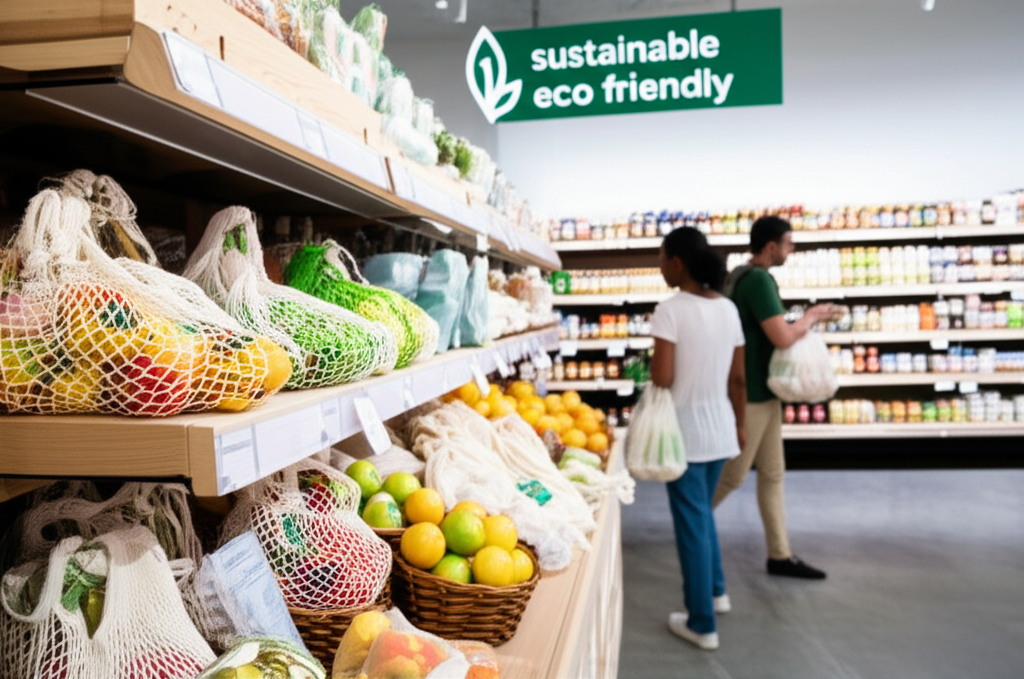Sustainable Shopping: How Brands Are Going Green
Explore how modern brands are embracing sustainability and how consumers are driving the demand for eco-friendly products.
The retail industry is undergoing a green revolution. As climate change concerns intensify and environmental awareness grows, consumers are increasingly making purchasing decisions based on sustainability factors. This shift is forcing brands across all sectors to rethink their practices, from sourcing and manufacturing to packaging and distribution.
The Consumer-Driven Sustainability Movement
Today's consumers, particularly millennials and Gen Z, are willing to pay premium prices for sustainable products. Studies show that 73% of global consumers would change their consumption habits to reduce environmental impact, and 81% of millennials expect companies to make public commitments to good corporate citizenship.
This isn't just about feeling good—it's about aligning purchases with personal values. Consumers are researching brands' environmental practices, reading sustainability reports, and using apps to scan products for eco-friendly certifications. The transparency that digital platforms provide has made it easier than ever for consumers to make informed choices.
Innovative Packaging Solutions
One of the most visible areas of sustainable innovation is packaging. Brands are moving away from single-use plastics toward biodegradable, compostable, and reusable alternatives. Companies like Patagonia use recycled materials for packaging, while others are experimenting with mushroom-based packaging materials and seaweed-derived films.
The e-commerce boom has intensified focus on shipping packaging. Amazon's frustration-free packaging program and initiatives like Loop's reusable container system are setting new standards for sustainable delivery. Some brands have eliminated packaging altogether for certain products, using the product itself as its own container.
Circular Economy Models
Forward-thinking brands are moving beyond linear "take-make-dispose" models toward circular systems that minimize waste and maximize resource efficiency. This includes take-back programs, product refurbishment services, and designing products for disassembly and recycling.
Fashion brands like Eileen Fisher and Patagonia offer repair services and buy-back programs. Electronics companies are designing products with modular components that can be easily upgraded or replaced. These models not only reduce environmental impact but also create new revenue streams and deepen customer relationships.
Supply Chain Transparency
Modern consumers want to know where their products come from and how they're made. Brands are responding with unprecedented supply chain transparency, using blockchain technology to track products from raw materials to retail shelves. This transparency builds trust and allows consumers to make informed decisions about their purchases.
Companies like Everlane built their entire brand around "radical transparency," sharing detailed information about factories, costs, and environmental impact. This approach has influenced entire industries to be more open about their practices and impacts.
Carbon Neutral and Beyond
Many brands are committing to carbon neutrality or even carbon negativity. This involves measuring their entire carbon footprint, reducing emissions where possible, and offsetting remaining emissions through verified programs. Some companies are going further, aiming to remove more carbon from the atmosphere than they produce.
Microsoft has committed to being carbon negative by 2030, while Interface Inc. achieved carbon neutrality across their entire business in 2020. These commitments require fundamental changes to operations, from renewable energy adoption to sustainable transportation and supplier requirements.
Sustainable Materials Innovation
The development of new sustainable materials is accelerating rapidly. Lab-grown leather, recycled ocean plastic, and bio-based textiles are moving from experimental to mainstream. These innovations allow brands to maintain product quality and aesthetics while dramatically reducing environmental impact.
Adidas has created shoes from ocean plastic waste, while companies like Bolt Threads are producing leather alternatives from mushroom roots. These materials often perform as well as or better than traditional options while telling a compelling sustainability story.
The Business Case for Sustainability
Sustainability isn't just good for the planet—it's good for business. Sustainable practices often lead to cost savings through improved efficiency, waste reduction, and energy conservation. They also help brands differentiate themselves in crowded markets and build stronger relationships with environmentally conscious consumers.
Companies with strong sustainability practices often see improved employee satisfaction, easier recruitment of top talent, and better relationships with investors and partners. ESG (Environmental, Social, and Governance) criteria are increasingly important in investment decisions and business partnerships.
Challenges and Opportunities Ahead
While the trend toward sustainability is clear, challenges remain. Sustainable materials and processes often cost more initially, and some eco-friendly alternatives don't yet match the performance of traditional options. However, these challenges are driving innovation and creating opportunities for brands that can solve sustainability puzzles.
The brands that will thrive in the coming decades are those that view sustainability not as a constraint but as a catalyst for innovation, differentiation, and deeper customer connections. The green revolution in retail is just beginning, and the opportunities for positive impact are enormous.
